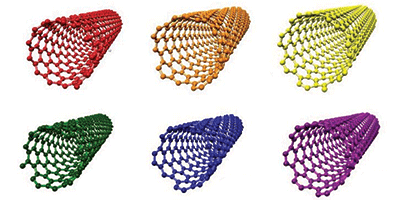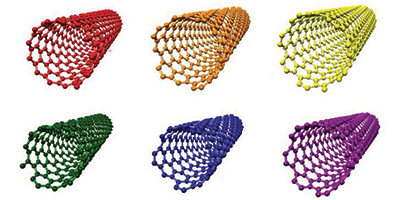Sorting Carbon Nanotubes with Light
Single-walled carbon nanotubes possess many industrially useful properties such as high thermal and electricity conductivity. These, and other properties, depend on the nanotubes’s chirality—the angle at which the two-dimensional lattice of carbon atoms “wraps” to form the nanotube. But batches of nanotubes are usually synthesized with a distribution of chiralities, while many nanotubes with the same chirality are needed for applications, like chemical and optical sensors. Now, researchers in Satoshi Kawata’s group at Osaka University in Japan have shown that a low-power laser can effectively sort nanotubes according to chirality. Their method is potentially less expensive and able to select for a wider range of chiralities than other approaches.
Kawata and his colleagues filled a glass microcapillary tube with solution containing suspended nanotubes with a spread of chiralities. The researchers then shone a tunable red laser into one end of the tube for several hours. When light from the laser was in resonance with a nanotube’s band-gap energy, it scattered more readily, imparting a force large enough to move the particle. Since band-gap energy is related to chirality, Kawata and his team were able to push nanotubes with a specific chirality toward the other end of the tube by tuning their laser to the appropriate wavelength. Kawata’s technique is inexpensive and relatively fast and only selects intact nanotubes, since damaged nanotubes don’t have the necessary optical resonances. Kawata and his team were, in some cases, able to double the relative concentration of nanotubes with a particular chirality. And they suggest that chiral purities of up to could be achieved if they use two or more counterpropagating laser beams with different wavelengths to push different chiralities in opposite directions,
This research is published in Physical Review Applied.
–Katherine Kornei





